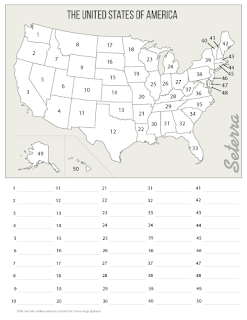Human geo. Blog #8!

Good day Reader, my name is Lane Miller. Today in human geography we got a new topic of mapping the world. We are doing the United States, all 50 of em, and well here are a list of them. 1. Washington 2. Oregon 3. California 4.arizona 5. Nevada 6. Utah 7. Idaho 8.montana 9.wyoming 10.colorado 11. new Mexico 12.texas 13.oklahoma 14.kansas 15.nebraska 16.south Dakota 17. north Dakota 18. Minnesota 19. Iowa 20. missurio 21.arkansas 22.louisiana 23.wisconsion 24.mishagain 25.illinois 26.indiana 27.ohio 28.kentuky 29.tennese 30.missisipi 31.alabama 32.georgia 33.florida 34.south Carolina 35.north Carolina 36.virgina 37.west Virginia 38. Pennsylvania 39.new york 40. Vermont 41.new Hampshire 42.maine 43.massachesets 44. Rhode island 45. Connecticut 46.new jersey 47.delewhere 48.maryland 49.hawie 50.alaska
